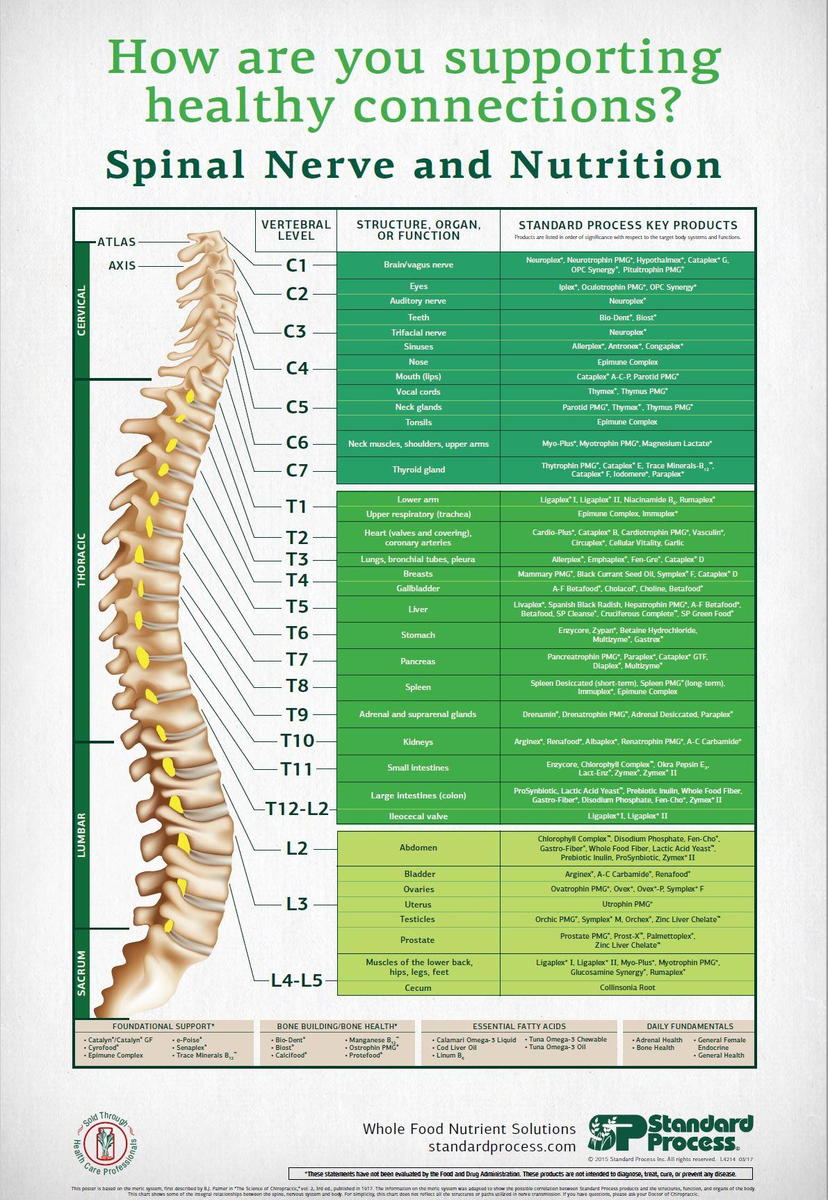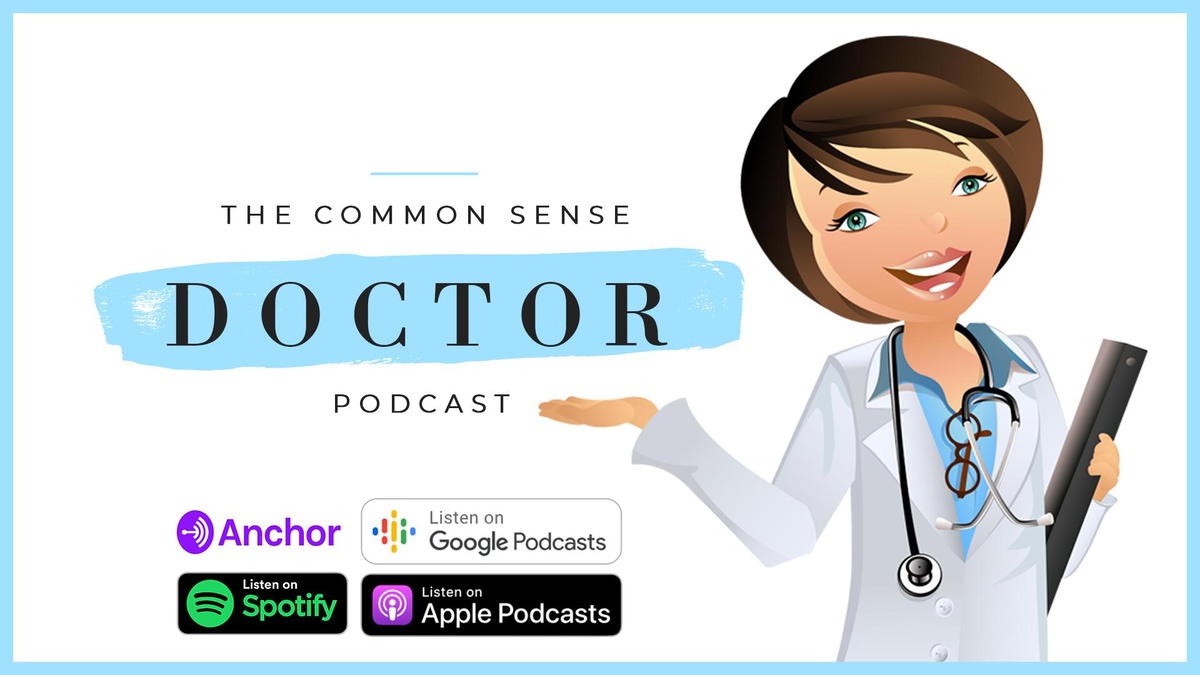How Chiropractic Relates to Our Health?

- posted: Sep. 24, 2019
Most of my patient know that I like to explain how chiropractic affects your health. Many times after palpating a patients spine, I may ask a strange question like:
“Have you had any constipation, diarrhea, or bloating?”
“Are you having any heartburn issues or stomach pains?”
“Have you been having any headaches or sinus issues?”
Many times, I hear, “How did you know that?” It is not magic, but the way the spine works!
I want to explain this simple anatomy and physiology of your body so you too can see how a simple adjustment may clear up some of your signs and symptoms.
In High School, when you studied the spine you should have also studied about the spinal cord. So, the spinal cord is in the center of the spine and it has nerves that some run out the side and to your organs. When we palpate the spine and find a “subluxation” or rotation we may assume that those nerves are getting impinged; possibly causing disruption to those organs.
Typically, I like to explain this process to my patients in an analogy. Everyone has had a breaker box go out. If you plugged a dryer in the outlet and all of the sudden the dryer stops, you may see a reset button on the device. Yet, if that does not work, we have to go outside to the breaker box and see if a fuse or the switch has turned off. This is a safety mechanism, so you don’t continue to use that dryer and the wires become overloaded with electrical current, thus causing an electrical fire.
Well, your spine is somewhat the same. I usually like to tell my patients that if your organ is having some type of dysfunction, lets use food poisoning. The stomach and gallbladder will send mixed or strange signals to the spine. The spinal cord then picks up this information and sends it to the brain. Now the brain interprets this information and tries to help the stomach and gallbladder by sending immune cells to it and other chemicals to the area to help support this organ. Yet, the organ is not responding to these chemicals, and it continues to send these weird messages to the brain. Almost garbage like. Here is where the spine may be like a breaker. It may rotate to pinch the nerve and slow down the signals therefore giving the brain time to figure out what is wrong and therefore slowing down the response back.
Now, how would I know it is the stomach? Because at each level of the spine the nerves come out to a certain organ of the body. If my patient is continuously having the same midback pain at the same vertebral level and they get some relief but it keeps coming back, I have to rule out stomach. At this point I will talk to the patient about possible stomach problems and try to address these symptoms. I find that many times when I began to address the issue with the organ, magically the back pain subsides.
It works both ways as well. If the low back is out due to a strenuous game of golf, I will ask if the patient has been noticing any bowel changes or prostate issues. They are amazed that I knew this! It is all science! The nerve that is being pinched by the rotation of the lumbar spine, may have been blocking the communication to the organ, therefore leading to a change of bowels or other areas.
I see this commonly with female issues. Many times, if a woman is late on her cycle or cramping and even having infertility issues, we have seen results. I remember once walking in Walmart with my dad (who is also a chiropractor) and a woman stopped him and turned to her husband and said, “This is the man who got me pregnant”. She was going through several infertility treatments and mentioned it to my father. My father adjusted the low back area stimulating the nerves that go to the uterus and ovaries. Remember, this deficiency in your organs may come from a low communication from the nerves. Once we open that line of communication, things began to work properly. My dad performed several adjustments on this woman and by her next cycle she was pregnant. It wasn’t a miracle or a guess, it was pure science of the body. I think we forget these basic anatomy and physiology techniques and go straight toward the pills and artificial treatments.
Since I do acupuncture as well, we have found the benefits of Chiropractic and Acupuncture together. I get many clients with infertility issues. They are confused when I want to adjust the low back first. I am trying to open the communication between the brain and the organ so it can work at its optimal level. Once this communication is open, other acupuncture treatments for this condition respond much quicker and with better results. While studying acupuncture, I learned that chiropractic has been done for centuries by the Eastern culture. It just was not named “Chiropractic Manipulation”. Many medical history books for Eastern medicine has referred to this form of spinal manipulation with co-treatment of acupuncture and herbal therapies. Though, many people think this form of medicine is new and “voodoo” but it has been used for centuries by other practitioners.
So, here is where the questions begin when my patients realize that chiropractic can focus on more then just musculoskeletal. What can it help organ wise? I like to go over the most common and basic symptoms that come in my office and requested by patients when they realize this spinal correlation.
We will start with the top of the spine and work our way down.
First, I must go over how the spine is categorized. C means Cervical which means the neck. You typically have 7 vertebrae in this area. We will identify it as C1, C2, etc.
For the midback these vertebrae are named Thoracic and you have 12. We will identify as T1, T2, …T12. For the low back these vertebrae are identified as Lumbar and we will identify as L1, L2, L3, L4, & L5. Finally, we will have the Sacrum, where all the nerves from the low back spine meet and come out of the sacral foramen.
OK, now that you know the basic anatomy we will start with the neck. The most common conditions, my patient come in for treatment (other than musculoskeletal) are: headaches, migraines, sinus pain, twitching of the eyes, ear infection/clogged ears, foggy brain, jaw pain, sore throat.
Now, let me explain how the nerves effect these areas. The occiput is the base of the skull. There are two little tendons attached to each side of the occiput. If these tendons become tight it can affect a headache like pain that cause pain from the base of the neck, wraps along the top of the head and into the front of the forehead. Once this area is adjusted, the “Mohawk” like headache goes away. This area will also give the patient a feeling of “heavy head” or “foggy brain”
C1 nerve goes across the top of the forehead. Many times, patients with headaches that run along the forehead only this may be a C1 issue. This nerve also affects the Vagus Nerve. This nerve is very important. It goes from the brain all the way down to the stomach. If this nerve is off, then people may notice when they have anxiety or over thinking or stress that their stomach begins to bother them. Many times, if we manipulate this nerve, the stomach pain stops. I sometimes see changes in patients with Gastroparesis due to this nerve impingement.
C2 nerve goes to ears, behind the eyes, and in the face (under the cheeks) This is typically the nerve I look at for sinus issues, headaches behind the eyes and ear infections.
C3 nerve can go to the jaw and face. This is the vertebrae I focus on when a patient is complaining of TMJ, nerve pain in the face, and weird teeth pain. I sometimes will look at this nerve for sinus complaints as well.
Thoracic area:
The nerves in this area usually go to the organs in the mid-section of the body: chest, stomach, anything above the belly button. Here I will list the most common signs and symptoms that come in my office for treatment and how the nerves correlate.
T2 nerve goes to the heart. If someone is experiencing stress and anxiety or having a reaction from their mitral valve prolapse, many times the patient will come in and specifically ask me to look at this vertebra and adjust if need be. The patient usually indicates they feel calmer and the heart seems to be back to normal. This does not exclude important medical evaluation; this is just a temporary relief from an already diagnosed condition.
T3 nerve goes to lung. This is my favorite area to work on with asthma patients. I have seen amazing results and completely resolving children with asthma to the point they no longer have to be on medication. Sometimes there is a glitch in communication to the lung. Adults who are going through an episode seem to get immediate relief after the manipulation of this area. I find I look at the vertebrae during cold and flu season and when a patient has been diagnosed with pneumonia or bronchitis. When the nerve is stimulated, it seems to speed up recovery and give a sense of relief from discomfort.
T4 nerve goes to Gallbladder. This area is not only a major area for musculoskeletal discomfort but when I notice someone is having digestive issues or they are giving me the symptoms of a low functioning gallbladder (necessary for hormones, digestion, and other organ processes), I like to adjust this area first and see if maybe it resolves their condition. Sometimes the over use of the shoulders is what pulls the vertebrae out leading to the dysfunction of the gallbladder
T6 nerve goes to the Stomach. I seem to manipulate this a lot for people with acid reflux, and digestive issues. This seems to be the area most commonly going out over and over again. When I see this as a repetitive subluxation, I must address the patient on their digestive health and focus on fixing this organ first.
T9 nerve goes to the Adrenals. Ladies, this seems to also be the area where our bra clasp lands. If a woman seems they are constantly having tightness and discomfort in this area, it could be the bra but more likely the adrenal. Listen to my podcast on adrenal health and you will learn so much more.
T11 – L2: This nerve goes to the small intestines and large intestines. Do I need to say anymore? IBS, Constipation, Diarrhea, Chrons, Gas, Bloating, anything having to do with the function of the intestines (listen to my podcast on digestion) is why we want to stimulate this nerve. It is the MOST COMMON area I work on that most people don’t even realize it controls your bowels. I have patients mention poop issues to me all the time. I will adjust the area and they usually come back saying, “I don’t know what you did last visit, but as soon as I left I had to go to the bathroom!” Again, it is not magic, it is science and allowing the nerves and body to work together in its most optimal state.
L3: This nerve goes to: bladder, ovaries, uterus, testicles, prostate. This is the area I always focus on when I hear about female issues, prostate problems, or bladder issues such as wetting the bed. There are so many times women have called the office and said “Twenty minutes after I left your office, I finally started my cycle”, “My child stopped wetting their bed”, “My incontinence is less”, “I have had less prostate issues”. Again, we are only taking the impingement off the nerve to help it communicate to the organ and brain.
Finally, the Sacrum. I love, love, love looking at the sacrum. I think it is the most misdiagnosed subluxation amongst chiropractors, PTs and Orthopedists. Remember, all the nerves run from your low back into the sacrum. So, if this area is out of alignment, issues of infertility, female cycle issues, bladder issue, abdominal issues, and bowel issues and be affected by this one bone not properly set.
Why I like to explain this basic anatomy and physiology is because many of my patients have come to realize, let’s try this simple technique first before running to the doctor for drugs or unnecessary imaging. Many times, a simple adjustment can relieve your condition. Just remember, a good chiropractor is going to identify the difference between a nerve impingement and a serious condition. Many times, I have diagnosed Kidney stones, gall stones, or mitral valve before treatment and referred to their doctor for an evaluation. So, a good doctor is one who works with all the professions. Because we should want what’s best for the patient!

HOURS OF OPERATION
Our Regular Schedule
7:30 am - 2:30 pm
3:45 pm - 5:00 pm
Closed
7:30 am - 2:30 pm
3:45 pm - 5:00 pm
Closed
7:30 am - 2:30 pm
3:45 pm - 5:00 pm
Closed
Closed
Locations
Find us on the map
Chiropractic Acupuncture Health Center
2224 Cahaba Valley Drive, STE B3
Birmingham, Alabama 35242, United States


